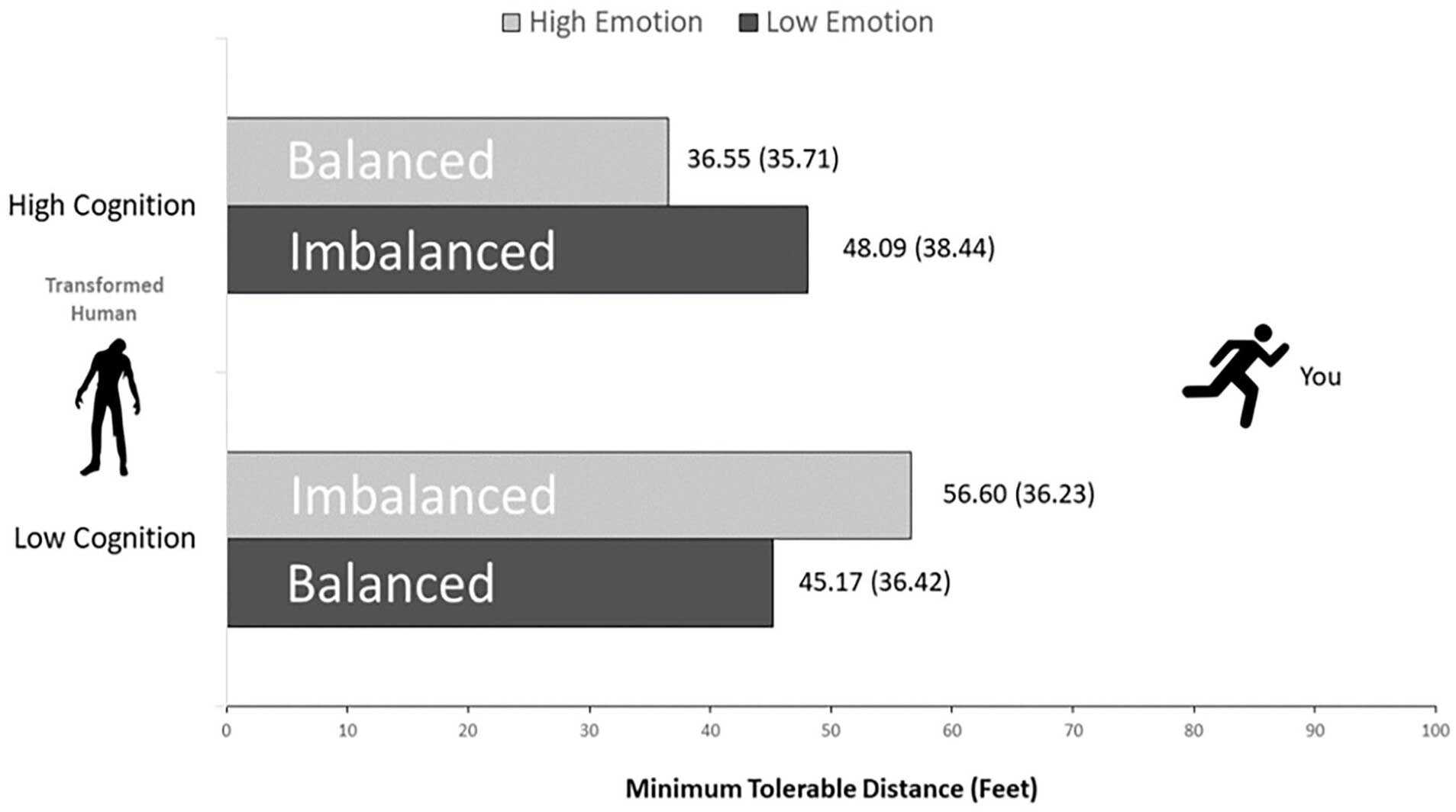What makes monsters truly frightening? Is it their appearance, their actions, or something deeper within their character?
Monsters found in movies, books, and popular folklore can be terrifying in part because they have dangerous physical characteristics like claws or teeth that cause harm. But beyond physical characteristics, there may be something inside the minds of monsters—their psychological characteristics—that makes them seem especially dangerous.
Psychological characteristics of people (or monsters) are generally perceived along two dimensions: one related to cognitive capacity (how much they can think, reason, and exert their own agency), and another related to emotional capacity (how much they can feel emotions, pleasure, and pain).
Applying this idea to what makes monsters scary led our research team to an intriguing hypothesis: people fear imbalanced minds. That is, that people might find threatening beings especially frightening when they seem to be mismatched in cognitive and emotional capacities: either high in cognition but low in emotion, or high in emotion but low in cognition.
For example, two famous movie villains, Hannibal Lecter and the Terminator, are each high in cognitive abilities with very little emotion, making them especially chilling foes. On the other hand, Regan MacNeil (the demon-possessed child from The Exorcist) appears extremely high in emotion while lacking any cognitive control at all, making her seem chaotic.
Could these imbalances between capacity for thinking and feeling help us understand what makes monsters scary?
Imbalanced Minds in Fictional Monsters
We ran four studies to explore the fear of imbalanced minds as an explanation for why some monsters appear scarier than others.
We selected examples of common popular fictional monsters, such as zombies, vampires, and Frankenstein's monster. Participants rated each on capacities for cognition, emotion, and also how scary they personally found the monsters to be.
Among the most frightening entities were demons and the devil, who scored high in cognition but relatively low in emotion. As an interesting comparison, a person possessed by the devil was also rated highly scary, but tended to have an opposite imbalance (high in emotion but relatively low in cognition). On the other hand, monsters with low scores in both emotional and cognitive capacities, like the Blob and Frankenstein's monster, were considered to be the least scary monsters.
Werewolves vs. Vampires
Other insights emerged when comparing two iconic monsters of classic films: werewolves and vampires. On average, werewolves were deemed scarier than vampires. Whereas werewolves were rated relatively high on emotion compared to cognition, vampires tended to be more balanced on both dimensions and scored about the middle in terms of scariness. Again, the difference in scariness reflected a difference in balanced mind.
These findings highlight the importance of the balance between emotion and cognition. Although greater cognitive and greater emotional capacities of monsters each individually contributed to how scary they were, the sum of these two dimensions (cognition + emotion) was still not as good a predictor of scariness as the imbalance between cognition and emotion.
Slow vs. Fast Zombies
Another interesting comparison can be found between the "slow" zombies made famous in classic films like Night of the Living Dead, compared to the "fast" zombies popularized in recent films such as 28 Days Later. Both kinds of zombies were rated as low in emotion compared to other monsters. But the fast zombies were rated as a little higher in cognition than the slow zombies, and somewhat scarier.
Varying the Imbalanced Minds of Monsters
In a final study, we experimentally varied our descriptions of monsters and their imbalanced minds. Participants read about a hypothetical virus that transformed normal humans into zombies driven to bite and infect other people. The transformations were described in one of four different ways, corresponding to four levels of either balanced mind (low cognition/ low emotion or high cognition/ high emotion) or imbalanced mind (high cognition/ low emotion or high emotion/ low cognition).
We asked people to report the "minimum tolerable distance," or how far people would want to stay away from these different types of zombies. Not surprisingly, participants wanted to maintain the greatest distance from zombies with imbalanced minds and deemed them to be the scariest zombies, compared to those with balanced minds.

The final study also shed light on why imbalanced minds elicit greater fear. Observers rated imbalanced zombies as less predictable and controllable than the balanced zombies, and statistical analyses indicated this explained why they seemed scarier. The imbalance between thinking and feeling makes these agents appear particularly chaotic and uncontrollable, amplifying observers' fear.
Summary
What makes a monster scary? This research reminds us that the fear of the unknown and unpredictable is a potent force in our perception of scariness. An imbalance between cognition and emotion serves as a cue to a dangerous mind, and plays a crucial role in what makes some monsters truly terrifying.
For Further Reading
Hernandez, I., Ritter, R. S., & Preston, J. L. (2023). Minds of monsters: Scary imbalances between cognition and emotion. Personality and Social Psychology Bulletin, Online first publication available. https://doi.org/10.1177/01461672231160035
Jesse Preston is Associate Professor of Psychology at the University of Warwick who studies the psychology of belief and judgments of mind in the self and others.




